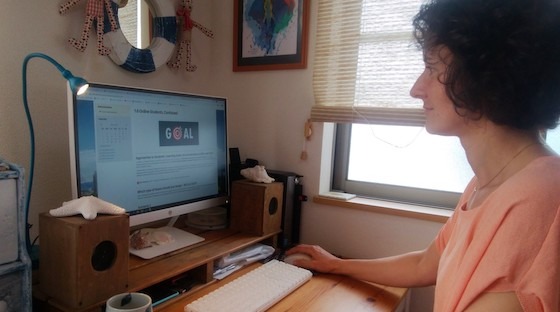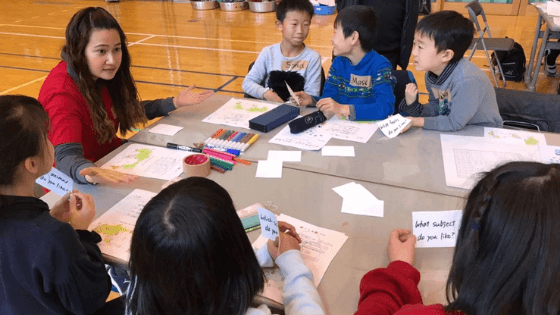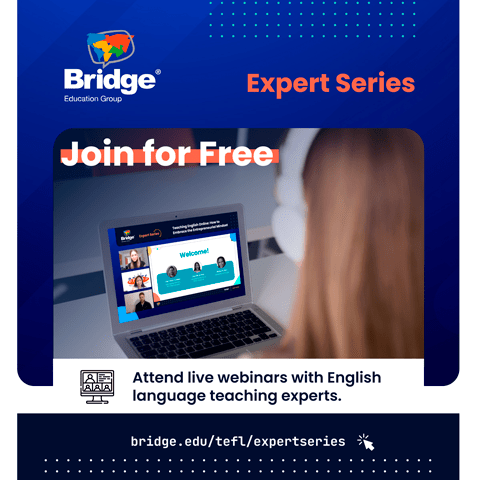Have you ever heard of inquiry-based learning? If you’re an experienced English teacher, you may already know and even use this modern learning method. Even if you’re new to teaching, you may have come across this innovative teaching style, albeit under another term. Let’s take a closer look at what inquiry-based learning is all about!
Learn other ESL teaching strategies in our Master TEFL/TESOL Certificate course.
What is inquiry-based learning?
Inquiry-based learning is an active learning style in which students find the solution to a problem mainly by themselves instead of being instructed by their teacher. They usually present their findings and solutions in front of the class by the time the activity has come to an end.
Inquiry-based learning is also called exploratory learning or active learning, and it is usually interwoven with problem-solving activities, student autonomy, and independent thinking. The students’ curiosity gets triggered by presenting a problem to them that they need to solve. This can be achieved through individual research, pair work, or teamwork. When students take the lead in an activity, their motivation is much higher than when they are simply following instructions or answering the teacher’s questions.
Learn about other popular ESL teaching methods.
How can I use inquiry-based learning in the ESL classroom?
Inquiry-based learning is a fantastic method to get your students curious, motivated, and involved. By handing the lead over to your students and giving them opportunities to discuss a problem in the target language, you can also decrease teacher talking time (TTT) and increase student talking time (STT) in your classroom.
The active pace of inquiry-based lessons usually gets your students moving, talking, and problem solving. It is best to pick a topic or a problem that targets your students’ interest, that is age- and level-appropriate, and that, at the same time, gives your students a chance to explore and use English in a natural way.

Young learners collaborate on a report.
What is the teacher’s role in an active learning classroom?
When you use the inquiry-based method efficiently, your job as an instructor becomes more like the job of a facilitator. Instead of giving directions, lecturing, or explaining a lot of grammar, you support your students during the activity. When they have questions, you assist them, and while your students are working on the problem, you observe their language and give them feedback, either on the spot or later on, depending on what pattern you have established with your class.
If you are teaching a high-level class, you can even appoint leaders within the groups and let them be the first contact when the other students need help. If you are teaching a lower-level class, you might be the only person they want to seek help from.
Inquiry-based activities still need thorough planning on your part. You’ll need to outline timing, set up well-matched pairs and groups, appoint team leaders, set rules for how your students can conduct research (such as the use of smartphones, online dictionaries, and so on), and prepare/provide worksheets or other materials, such as posterboard.
Read these tips for creating materials for the EFL classroom.
How do I teach my students necessary grammar and vocabulary?
If you need to cover a lot of ground with your students because they need to study for an exam or because they still need to learn the basics, it’s a good idea to mix things up between traditional ESL/EFL lessons and inquiry-based activities. In your traditional lessons, you can do the prep work by teaching grammar and vocabulary, and during the active learning phase, your students can experiment with the newly-learned language by using it freely.
Learn how to create ESL grammar lesson plans.

Johanna, an ESL teacher in Japan
Johanna, who is teaching English to junior and senior high school students in Japan, shares her experience using inquiry-based learning.
Johanna, can you tell us a little about the inquiry-based learning method?
At my school, we have been trying to increase the level of independence in our students by introducing subjects using exploratory and active learning. A large number of activities are based on inquiry. This means that the students choose a question or problem, cooperate to solve it, present the results, and then identify a new question or problem.
How does this method affect the students’ motivation and participation?
Since the students come up with their own ideas and questions that they want answers to, their motivation is quite high to begin with. For example, you can have your students conduct interviews or polls. In this case, the students would choose the questions they want answers to, interview people, present the answers to their classmates, and then decide what to ask next based on what they found out.
During the process of solving the problem, everybody is really engaged and involved. Each student has their task, such as researching, collecting the data, making the presentation, or leading the group in the quest.
Inspire your students even more by bringing pop culture into the ESL classroom.

ESL students work together on a project.
Can you recommend inquiry-based learning for both in-person and online classes?
Since inquiry-based, active learning relies a lot on the students’ direct communication and flexible cooperation, I have been using this method only in the physical classroom so far. However, I can imagine that it could work very well for an online class, too, if you create a kind of internet quest, make a virtual treasure hunt, or ask your students to write a profile on their favorite singer, musician, or actor/actress.
Get tips for teaching English online to groups.
Does the method work for any level of English learners?
I really think it does. I am teaching 12-year-old junior high school students right now, and their English is still at a beginner’s level. However, they are trying very hard to use English in order to communicate with each other and to write reports for their presentations.
If you have a class of intermediate- or even advanced-level students, I think you have a great time ahead of you with this learning method. Depending on their level, your students will explore the English they know and will become more confident in their English communication skills. This confidence then enhances the students’ motivation, participation, and willingness to learn and improve.
Do you have any advice for TEFL/TESOL teachers who are new to using inquiry-based learning?
Enjoy the lesson with your students! I think some teachers feel that they are not needed if they’re not standing in front of the class or if they’re not actively instructing their students. However, taking on the role of a facilitator is really rewarding, as it allows you to observe your students closely, get a feeling for their progress, promote student talking time, and, last but not least, share the explorative classroom atmosphere with your students.










